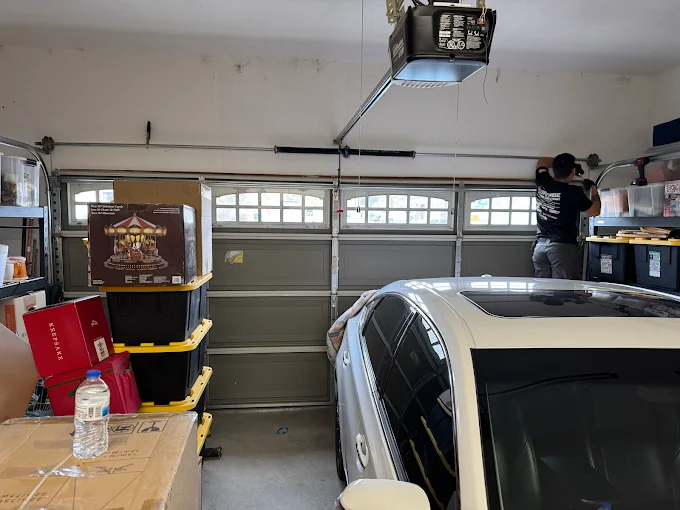
In the world of home design, bigger isn’t always better. Many homeowners are embracing the charm, efficiency, and personalized touch of a small custom home. However, limited square footage doesn’t have to mean limited style or functionality. With the right strategies, a small custom home can feel spacious, open, and inviting. By leveraging smart design principles, natural light, and multi-functional spaces, you can create a home that lives much larger than its blueprint suggests. Whether you’re planning a new build or redesigning an existing space, here’s how to maximize your small home’s potential.
Embrace Open Concept Living
One of the most effective ways to create a sense of spaciousness in a custom home is by adopting an open floor plan. Removing unnecessary interior walls allows for seamless flow between living, dining, and kitchen areas. This not only improves functionality but also lets natural light travel freely throughout the space, enhancing its openness. Strategic furniture placement within the open area can define each zone without obstructing movement. Moreover, fewer visual barriers make the entire space feel larger, giving you room to breathe and enjoy your home more comfortably.
Maximize Vertical Space
When square footage is limited, the best direction to build is up. Utilizing vertical space in a custom home can significantly enhance storage, functionality, and visual appeal. Tall cabinetry in kitchens and bathrooms provides ample storage without consuming floor space. Wall-mounted shelves, hanging planters, and vertical artwork draw the eye upward, giving the illusion of higher ceilings. Even in small bedrooms, consider using bunk beds or lofted sleeping areas to free up space underneath. By thinking vertically, homeowners can unlock a wealth of potential often left untouched.
Light and Bright Design Tricks
Lighting plays a critical role in making a space feel open and airy. Natural light, in particular, can dramatically transform the perception of a room’s size. In a custom home, consider installing larger windows, skylights, or glass doors that invite sunlight to flood the interior. Reflective surfaces like mirrors, glossy finishes, and light-colored walls also help bounce light around the room. White or neutral paint colors make spaces feel fresh and expansive. By combining natural and artificial lighting thoughtfully, you can illuminate your home in a way that feels both spacious and welcoming.
Built-In Storage and Smart Furnishings
Incorporating built-in storage is a hallmark of intelligent small home design. These custom solutions are tailored to your home’s exact dimensions, allowing you to utilize awkward corners or underused spaces efficiently. Think benches with hidden compartments, drawers beneath staircases, and shelving units built into walls. Additionally, opt for multi-purpose furniture like ottomans that open up for storage, or coffee tables that convert into desks. This approach ensures your custom home remains clutter-free without sacrificing comfort or functionality.
Connect with Nature Through Outdoor Spaces
Even if your interior is compact, extending your living space outdoors can make your home feel much larger. Custom-designed patios, decks, or balconies provide extra space for relaxation, dining, and entertainment. Large sliding or folding glass doors blur the line between inside and out, creating a seamless transition that visually expands your living area. In regions like Ontario, where seasonal living is important, covered outdoor areas can be used year-round with the right design features. This connection to the outdoors enhances the livability of any custom home, especially smaller ones.
Smart Zoning with Purposeful Layouts
Smart zoning is key to ensuring each area in a small custom home serves a specific function without overlap. A well-thought-out layout considers how you live and what spaces you use most. For instance, placing the kitchen near the entryway might facilitate grocery unloading, while a tucked-away bedroom provides privacy. Room dividers, area rugs, and even lighting can be used to define zones without enclosing them. A custom layout ensures every square foot is optimized for your lifestyle—something that experienced custom home builders Owen Sound Ontario specialize in achieving with precision and creativity.
Create Illusions with Design Elements
Design elements that play tricks on the eyes can make a small custom home appear more expansive. One effective method is to use consistent flooring throughout the home, which provides visual continuity and reduces the perception of segmented areas. Mirrors strategically placed across from windows reflect light and views, doubling the sense of depth. Another tip is to install floor-to-ceiling curtains, which make windows appear larger and ceilings higher. These subtle design touches, when implemented thoughtfully, contribute significantly to the home’s overall spacious feel without requiring physical expansion.
Opt for Sleek and Streamlined Fixtures
In smaller homes, every detail counts. Bulky furniture and ornate fixtures can overwhelm limited space, making it feel cramped. Instead, choose sleek, minimalist designs that provide functionality without visual clutter. Floating vanities, wall-mounted faucets, and simple cabinetry lines are ideal choices. In the kitchen, slim-profile appliances and under-cabinet lighting can free up room while enhancing usability. Streamlined aesthetics in a custom home keep the focus on openness, ensuring the design feels intentional and modern rather than confined or chaotic.
Consistency in Design Themes
Maintaining a cohesive design theme throughout your custom home helps to unify the space and create a sense of flow. Whether you prefer Scandinavian minimalism, rustic charm, or contemporary chic, sticking to a consistent color palette, materials, and finishes prevents the home from feeling disjointed. This consistency enhances visual harmony and reduces mental fatigue, making even small spaces feel calm and organized. Custom features like built-ins, trims, and cabinetry can be tailored to match the chosen style, reinforcing the illusion of a more expansive and curated home environment.
Utilize Mirrors and Reflective Materials
Mirrors are a powerful tool in any small home designer’s toolkit. When placed strategically, they not only reflect light but also amplify the perceived size of a room. A large mirror behind a sofa or across from a window can create depth and double the visual area. Similarly, glossy tiles, polished stone countertops, and metallic accents catch and reflect light, contributing to a brighter and more open ambiance. In a custom home, these reflective elements can be incorporated with purpose and precision to enhance aesthetics and functionality alike.
Conclusion
Designing a small custom home to feel larger is both an art and a science. It involves a thoughtful balance of light, space, function, and style. By incorporating open concepts, smart storage, natural light, and seamless indoor-outdoor connections, homeowners can create a living experience that feels far greater than its square footage. With expert planning and creativity, even the most compact custom homes can offer comfort, beauty, and functionality without compromise. Small doesn’t have to mean limiting—when every inch is designed with intention, your home can feel truly expansive.




